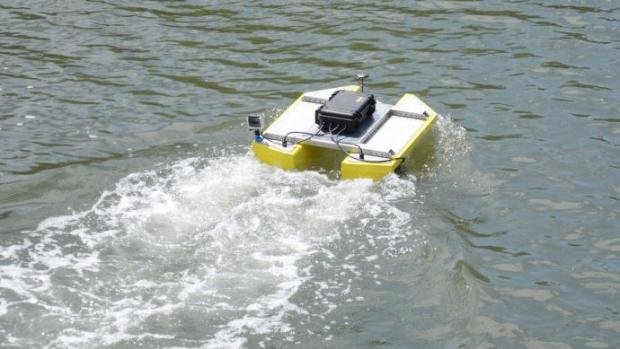Professor proves that environmental engineering is for everyone
Maurizio Porfiri’s autonomous aquatic robot went from cleaning up the Gowanus Canal to launching a successful start-up

A solar-powered robotic vehicle that collects aquatic data developed by Professor Maurizio Porfiri and postdoctoral researcher Jeffrey Laut.
Earlier this month at the Center for Urban Science and Progress (CUSP), Professor of Biomedical, Mechanical and Aerospace Engineering Maurizio Porfiri discussed the proliferation of citizen science — a field that may seem like a paradox to some, where non-professionals directly engage in departments like ecology, structural biology and engineering through collecting, analyzing and interpreting data. While citizen scientists benefit from local engagement and promote overall scientific literacy, the reality remains that it is difficult to maintain levels of citizen participation and action.
Reworking this citizen science framework, Porfiri introduced Brooklyn Atlantis, an innovative aquatic robot created in 2013 that works to dispel these shortcomings and simultaneously improve the environment of Brooklyn locals not too far from Jay Street. Running through the upscale neighborhoods of Carroll Gardens and Park Slope is the infamously polluted Gowanus Canal, where the completely autonomous aquatic vehicle lives and takes pictures, gathering quality water data using a variety of sensors. While the robot consists of a surface and 360° camera that together take extensive panoramic images, some of the most crucial photographs for analysis come from residents’ iPhones. The purpose in designing the Atlantis and its web interface is in the citizen’s best interest — one can take pictures of the canal and the wildlife surrounding the water, upload images to the platform and create tags on the images with ease. Tagging facilitates citizen scientists’ tasks of categorizing and cataloguing these images and the ones the robot captures. Residents are also able to interact with one another by verifying tags created by others. This collective behavior simultaneously works to keep citizens engaged through this “tagger and validator” response.
Brooklyn Atlantis formed the basis of Manifold Robotics, transforming the aquatic robot into an esteemed company. Having participated twice in PowerBridgeNY, a proof-of-concept center led in part by NYU Tandon that helps innovative research transition from the lab to full-fledged cleantech startups, Porfiri along with Tandon alum and postdoctoral researcher Jeffrey Laut have recently been awarded a Small Business Innovation Research Phase I grant, which will be used to develop computer vision systems for environmental perception in aquatic environments, giving “eyes” that allow the autonomous boats to explore waterways more efficiently.
While things are accelerating for Manifold Robotics, Porfiri stresses that the fundamental goals always lie in supporting the community and our planet.
“It is about empowering people in the neighborhood to gain an appreciation for how their environment is changing and to contribute to the cleanup,” Porfiri said.
Anna De La Rosa
BS, Media, Culture, and Communication
Class of 2021





